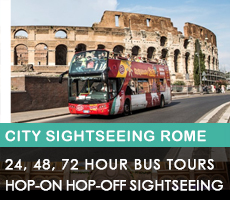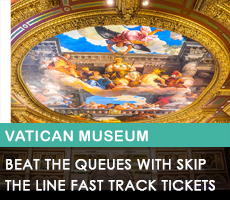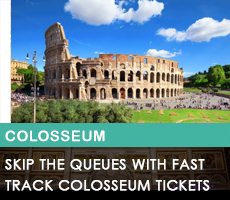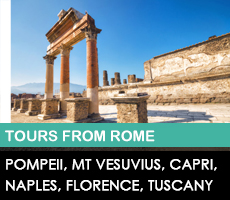What to expect staying around the Colosseum in Rome
A visitors' briefing - Colosseum & Roman Forum hotel district
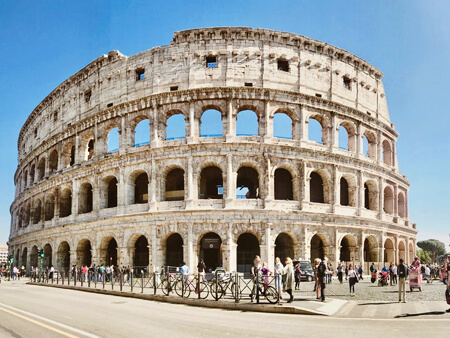
The Colosseum is of course a must see for every first time visitor to Rome, so the hotels near the Colosseum are a natural to check out.
So is staying near the Colosseum a good choice?
The Colosseum itself is to the south of the central part of Rome most leisure visitors want to visit. Once there, it's not a bad place to have as your base.
You can walk into the ancient city in 10-15 minutes and Line B of the Metro will take you with a change of line to the far side of the city for the Vatican, Spanish Steps etc.
As one of the major tourist draws its also a major stop on all the popular Rome hop-on hop-off sightseeing buses
Colosseum area overview
In terms of ease of airport and train transfers there are no direct public transport links. From Rome's main airport, Fiumicino, using public transport you will need to use the Rome Metro from either Termini Station or Ostiense to the Colosseum or Cavour Metro Stations, a distance of about 1 mile (1.5 kms) from either, so local cabs are an option.
In terms of hotels itself, the area has a very wide range of hotels to suit all budgets, its not the cheapest district, nor the most expensive, but room rates are highly seasonal and will swing dramatically according to the time of year you visit.
The hidden gem is the Monti district between Cavour and the Colosseum, a very atmospheric maize of lanes and alleys with many small hotels and many restaurants and bars to explore. If the price is right this is a great place to stay.
If you are looking for value for money, your “bang for your buck” increases dramatically east from the Colosseum towards Manzoni Metro station. There is a cluster of good quality 3 and 4 star hotels that can be very affordable.
Rione Monti district
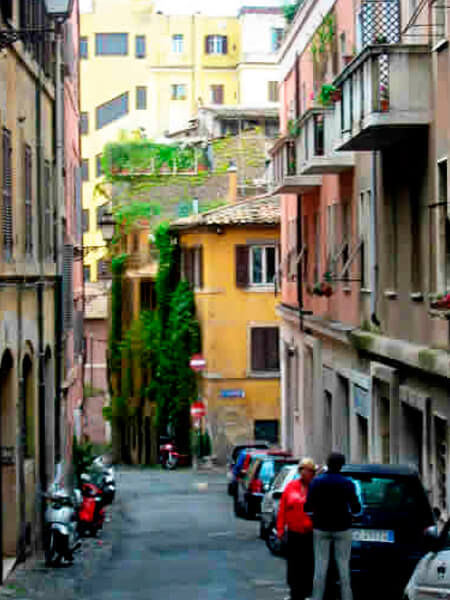
Just north of the Colosseum on the way up the hill towards Termini Station and Cavour Metro is the Rione Monto district - for most people the nicest district to stay in this part of the city.
The district tucked between via Nazionale and via Cavour, has kept intact all its enchanting beauty and this is thanks to its lovely narrow side-streets and superb examples of architecture almost around every corner.
The area has a village like atmosphere with plenty of small cafés and quite a lot of oriental restaurants too. It is a great place to find a bar and just people watch or intentionally get lost in the maze of narrow streets to make your own personal discoveries.
Accommodation is mostly in small establishments that blend in rather than stand out and range from cheap family bed and breakfast to boutique hotels.
The Colosseum
Just to the east of the Colosseum itself is a small grid of streets with plenty of small restaurants, bars and some hotels. Here also is the Parco di Traiano, the site of the ruins of the Baths of Trajan. The Baths were built in 104 AD over the ruins of Nero's Golden Palace, the Domus Aurea.
The entrance to the Domus Aurea is located directly across the street from the Colosseum, just inside the gates to the park. The small outdoor cafe in the park is a great place to sip a cappuccino and relax among some of the remnants of ancient Rome.
There are a few hotels here, but because of the proximity of the Colosseum itself everything is “touristy”, certainly a contrast to the nearby Monti district.
As you head east from the Colosseum the area becomes residential very soon and there is a choice of good value 3 and 4 star hotels as you head towards Manzini Metro.
Sights around the Colosseum
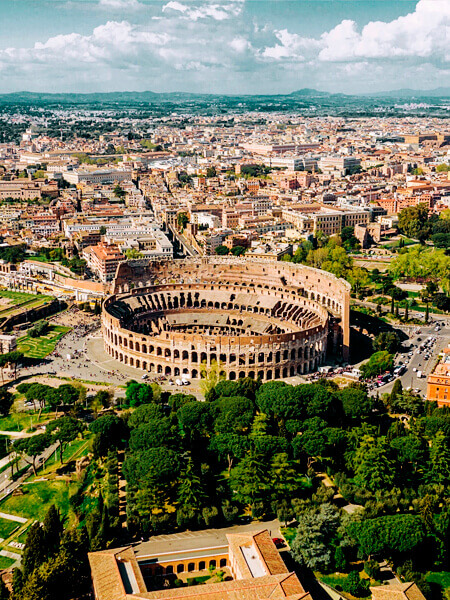
Today, it's still a pleasant stroll along the Via dei Fori Imperiali that runs from the Colosseum to Piazza Venezia alongside the Roman Forum. From here you continue into ancient Rome, the Pantheon is a short walk. In the evening, the area to the west of the Pantheon is a classic place to stroll and find a restaurant.
The wide Via dei Fori Imperiali is your gateway to most of the A-list tourist attractions in Rome and the Colosseum is a hub for numerous bus routes passing through going to all parts of the city.
The Colosseum is at the heart of the archaeological remains of the Roman Empire and there is a “green corridor” of archaeological sights from the Roman Forum right out to the Appian Way.
Although few people do, you could wander from attraction to attraction by foot along this corridor on foot. The Circo Massimo and Baths of Caracalla are perhaps the most visited, but with a good guide book in hand there are many interesting places to visit.
There are of course public buses and a hop on, hop off sightseeing bus called the Archeobus that makes it easy for you.
Transfers between the Colosseum district and Rome's airports & cruise port
Termini Station is the main hub for public transport in the centre of Rome and is close to the Colosseum, about a mile away or 2 metro stops.
From Termini Station the Leonardo Express train runs direct to the main Rome airport, Fiumicino. From the Colosseum you can do this airport journey cheaper by getting the Metro the other way to Piramide (2 stops) where you can walk through to the connected Ostiense railway station.
From Ostiense there are frequent suburban trains that go to Fiumicino much more cheaply than the Leonardo Express. See our Fiumicino train page for further details.
To Ciampino Airport, Terravision run frequent airport coaches from Termini Station or you can change Metro trains at Termini instead and go to end of Line A to Anagnina where a connecting local bus goes to Ciampino Airport. See our Ciampino bus page for further details.
Trains between Termini and Civitavecchia Cruise Port run twice hourly for much of the day from Termini. Again you can save yourself time by getting the Metro to Piramide (2 stops) where you can walk through to the connected Ostiense railway station where the Termini and Civitavecchia train stops.
Getting around Rome from the Colosseum/ Roman Forum
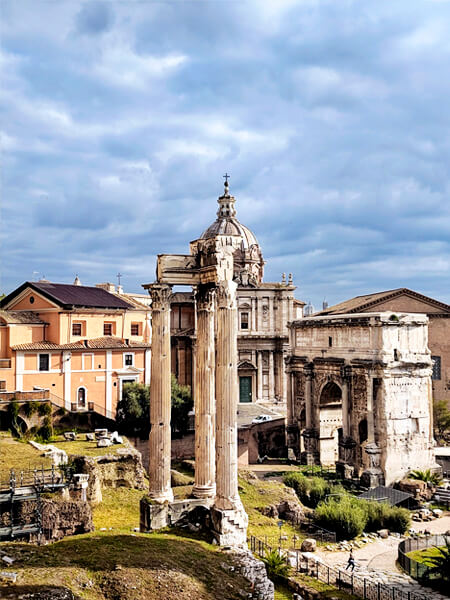
It is quite easy to get around Rome from the Colosseum area.
The district is served by two Metro stations at Colosseum itself and Cavour. Termini Station, Rome's main transport hub is the stop after Cavour on the Metro. Termini is where Rome's two Metro lines interconnect and by changing trains you can get to the Vatican and the Spanish Steps very quickly.
Local buses radiate out in all directions from the Colosseum with 9 bus routes alone going the short distance alongside the Roman Forum to the Piazza Venezzia at the heart of Ancient Rome.
All the cities hop-on hop-off tourist buses of course pickup from the Colosseum.
It should not be forgotten that the area of Rome that most visitors want to visit is quite compact and that much that is worthwhile in Rome can only be accessed by foot. The wide Via dei Fori Imperiali leads you from the Colosseum down by the side of the Roman Forum into the heart of the ancient city within 10 minutes. For many people, walking is the mode of transport for almost all sightseeing from the Colosseum.





